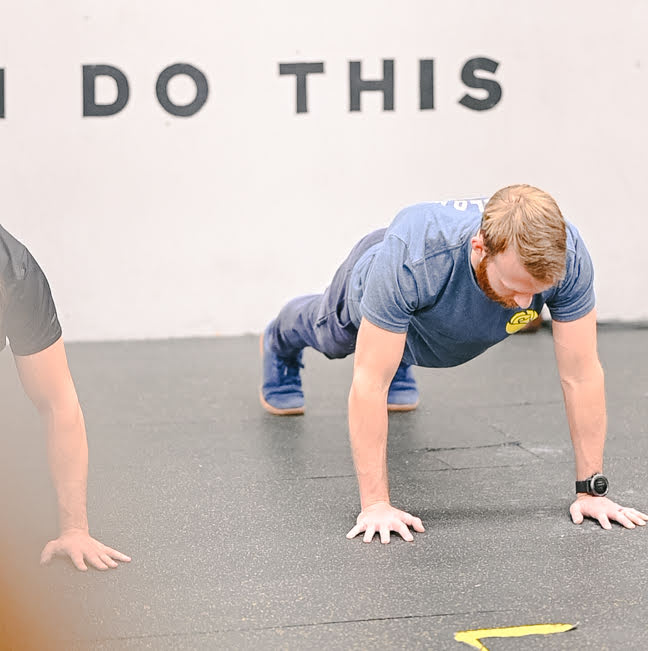What are you training for?
This phrase is pretty trite, but there’s a reason for that. It’s important that we conceptualize, internalize, and ACT on our goals (aka – what we are training for).
In a sea of self help gurus, Instagram experts, and fitness coaches on the internet, it’s really easy to be inundated with goal setting strategies, “finding your why,” motivational and inspirational hype pieces, and then a subsequent post in your feed talking about why that goal setting strategy you seemed to vibe with actually doesn’t work.
It’s a bit confusing, frustrating, and can have you feeling like goals can be rather pointless or a waste of time.
And to a certain extent, I agree.
While I absolutely love setting goals (truly, I’ve written about it before. Love me some S.M.A.R.T. goals), I think for the vast majority of people a goal can seem like a means to an end or an expiration date on a certain level of effort that we put forward.
Goals can often feel like one of those stupid 21-day challenges that your acquaintance from high school is posting about on Facebook. It’s a ton of effort towards something that’s not sustainable.
I saw someone post a graphic the other day that said, “Set goals so big it’s scary” … and while I understand the sentiment to it, I think setting huge, scary, destination based goals make it really hard to show up and get started. If you’re constantly living with a huge, scary goal in the back of your mind, it can slowly start to cripple your ability to take action towards said goal.
This is an extreme sort of mindset. Or, as I put it in a different blog post, the light switch mentality. People are either ON or OFF in the pursuit of their goals, but we try to be ON going full throttle for as long as possible until we’re inevitably forced to shut off. After a forced shut off, it’s quite difficult to flip that switch on again until we have some sort of jarring incident. In the world of fitness and nutrition, that jarring incident could look something like a bad check up at the doctor, a number on a scale we’ve never seen before, or sudden realization you aren’t in the shape you once were.
A mentality shift is needed. We can’t be on at 100% all the time, but we can create behaviors that become second nature that will eventually lead us to our goals.
How can we accomplish that mentality shift? Focusing on effort based behaviors rather than destination goals. Another way to put that: focus on input oriented goals rather than outcome oriented goals.
Outcome oriented goals would look something like this:
- I want to lose 40 pounds
- I want to make $X in sales
- I want to read 12 books this year
And yes, you can always go about the SMART goals system of starting at the end, and working your way backwards to end up taking these large goals and breaking them down into smaller and smaller pieces.
Or, we could just skip the outcome oriented goal altogether, and keep a single track focus on our effort towards said goal each week rather than having a crazy overwhelming and looming figure above us.
Input oriented goals would look something like this:
- I’m going to workout 3-4 times a week, each week.
- I’m going to go through my marketing process each week.
- I’m going to read one chapter of a book every night.
Already you can feel a momentum shift just in the way these words are said. “I want to” vs “I’m going to.” Everyone wants things, but these things are only achievable if you actually do the work. You must take action in order to achieve your goals, and getting out of your own way by setting aside a lofty outcome goal and replacing it with a very achievable input goal is a much easier way to take action.
Plus, there’s something pretty powerful about writing down the words “I’m going to…” followed by a very achievable goal. You sit back for a second and think, “Yeah, I can totally do this.”
James Clear said it best. “The goal isn’t to run the race. The goal is to do what runners do, and runners run each week.”
Our goal at Yellow Rose isn’t to constantly PR our lifts, to win competitions, or to be full throttle 24/7. Our goal is to do what healthy people do (workout, eat well, sleep, etc).
We’re towards the end of January as I write this, and for many people they’re going to look at February 1st rolling in and think, “Damn. I haven’t done anything to get towards my goals.” If that’s you, you’re not alone. This is a very human thing, and it’s nothing to be ashamed of. How we can counter those feelings? Action. How do we take action easiest? We set small, sustainable, and achievable input oriented goals that we can act on each week. Sustainable and achievable input oriented goals are how we can play the long game, and in the world of health and fitness, it’s the longest game around. We need to set and establish achievable behaviors each week that will set us up for a lifetime of fitness.
It can be tricky to figure out what some of these input oriented goals can be. Need some help? Email me – [email protected] and we’ll tackle this together.
See you at the gym.
-Clark



